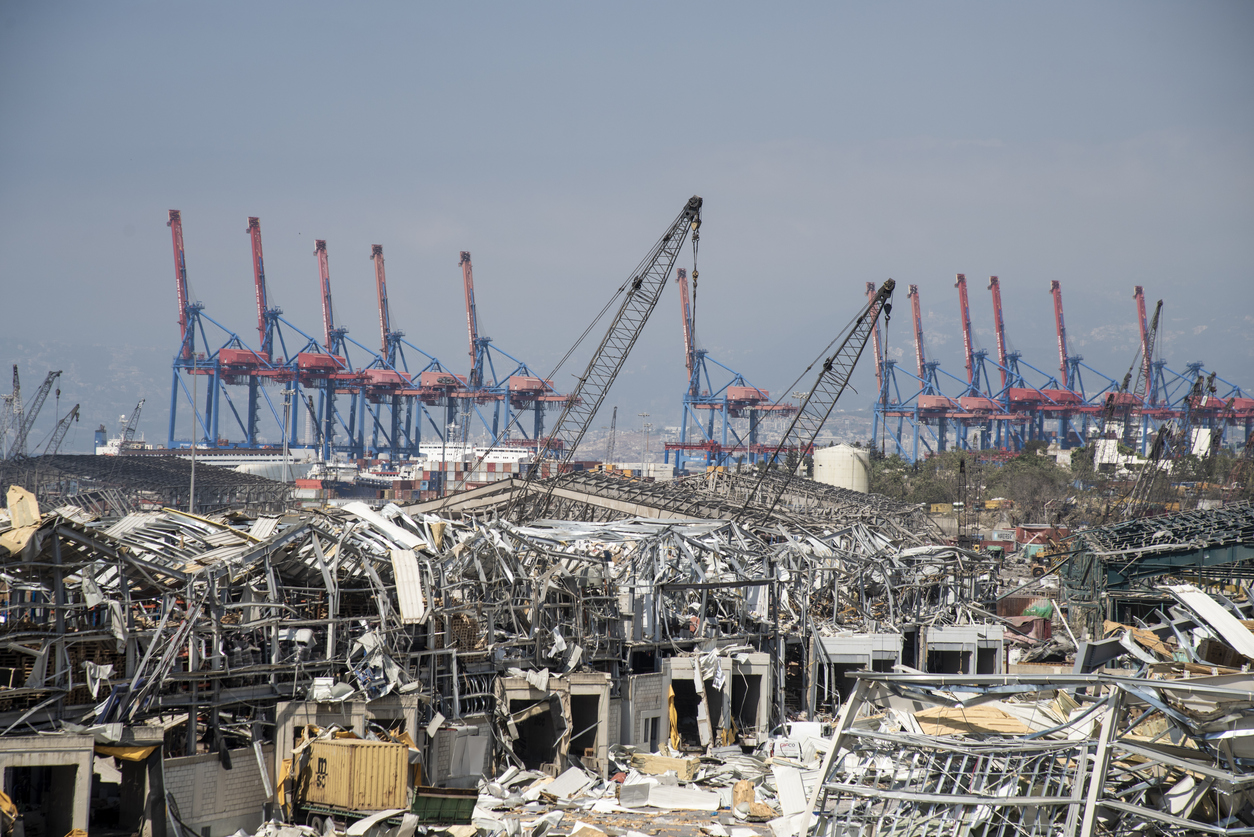Most Business Interruption (“BI”) policies indemnify for loss of turnover, rather than the loss of production itself. Yet in manufacturing, production is usually the first area affected by an insured event.
This paper explores the complex and often misunderstood relationship between lost production capacity and actual sales loss.
In the modern manufacturing environment — defined by automation, AI, digital twins, and data-driven supply chains — the connection between production disruption and financial loss is increasingly indirect. Understanding that relationship requires a multi-dimensional approach, combining operational, financial, and technological analysis.
The Modern Manufacturing Landscape
Manufacturing today spans a vast spectrum of industries — from traditional casting and machining to advanced additive manufacturing, robotics, and autonomous production systems. The rise of Industry 4.0 has brought:
- Internet of Things/IoT-enabled machines and sensors,
- Predictive maintenance algorithms,
- Digital twin modelling, and
- Integrated ERP/MES systems that synchronise production, inventory, and demand data in real time.
These developments enhance efficiency and control, but they also heighten interdependence. A localised outage — whether mechanical or digital — can disrupt upstream and downstream processes far beyond the initial failure point.
As a result, loss measurement has become less about counting units produced and more about analysing data-driven production ecosystems.
The Central Question: When Does Lost Production Equal Lost Sales?
Most BI policies, particularly under gross profit forms, indemnify for a reduction in turnover caused by physical damage.
However, manufacturing losses usually first manifest as production downtime, not immediately as reduced revenue.
The analytical challenge is to determine:
- Was the business limited by production capacity or by market demand?
- Did the loss result in permanent lost sales, or merely deferred fulfilment?
- How did the insured’s inventory, capacity, and customer behaviour affect the outcome?
Without this distinction, there is a material risk of overstating losses by equating production loss directly with lost sales.
Case Example: Insured A
Consider Insured A, operating two identical production lines contributing equally to annual revenue. When one line is out of service for three months, the insured claims 12.5% of annual turnover (3/12 of 50%). The claim assumes every unit produced is sold. But that assumption requires validation:
- Is production the limiting factor, or is it demand?
- Will customers wait for delayed orders, or seek alternatives?
- Do inventories or subcontract capacity mitigate the loss?
The answers define whether a production-based or sales-based assessment is appropriate — and whether the apparent loss is real, deferred, or avoidable.
Analytical Framework for Modern BI Evaluation
Inventory Analysis
Inventory remains the first buffer against lost production.
- Are inventory levels tracked in real time via ERP or MES systems?
- Can existing stock absorb the interruption period?
- Can inventories be replenished economically using spare or outsourced capacity?
Inventory use can prevent immediate sales losses, and in some cases avoid a sales loss altogether. However, inventory-use in the short term may transfer risk to future periods if stock cannot be replenished. That is why it is important to use data available from digital inventory systems to quantify real-time drawdown and recovery.
Production Capacity and Make-Up Potential
The ability to recover lost output determines whether the loss is temporary or permanent. Depending on the sophistication of the manufacturer, it may be possible to:
- Reallocate production and look to different product mixes to mitigate the financial impact. That may include flexible automation and robotics to reallocate production, or
- Consider component substitution to plug the gap where the production impact is at a component-specific stage of the process or
- Outsource all production to a third-party, maybe via digital platforms, to maintain throughput.
As accountants, we are able to evaluate:
- Historical capacity utilisation versus rated capacity;
- Maintenance schedules that could absorb recovery work; and
- Third-party production options.
Bottleneck and Constraint Identification
In multi-stage production systems, losses at non-critical stages may not affect overall throughput. In other words, the true loss potential lies at the bottleneck stage rather than a non-bottleneck stage.
Advanced data tools (AI-based constraint mapping, digital twin simulations) can help identify where the effective constraint lies and whether it was impacted. Where that level of sophistication does not exist, detailed production records should be available so that we can properly understand where production capacity is critical to the overall operation, to determine the real loss exposure.
Deferred Sales and Customer Dynamics
A fall in production does not always equate to a fall in sales. When customers are dependent on a supplier’s unique product or bound by long-term contracts, they may simply delay their purchases. Conversely, in fast-moving or competitive markets, a temporary loss of supply can cause permanent customer defection.
What we will look for in order to understand the extent to which sales can be deferred are detailed customer sales data, CRM data, and order histories so that we have an empirical basis to determine whether lost sales were deferred, displaced, or lost entirely.
Order Book and Demand Testing
Sales order data can be a critical information point in understanding demand behaviour:
- Were orders cancelled or postponed?
- Did delivery lead times lengthen?
- Were backlogs cleared post-recovery?
Integrating order-book analysis with production and inventory data is often required to provide a joined-up view of demand and loss recovery potential.
Demand and Market Conditions
Finally, ensuring that all links in the BI chain are satisfied is critical, and that the damage at the Insured location is responsible for any reduction in performance rather than anything else.
This requires us to consider external factors, including energy costs, supply chain disruptions, and wider market conditions. All of these factors can alter baseline demand during the loss period meaning that over-reliance on historical sales averages can risk overestimating the “but-for” scenario.
To the extent sectoral indices, customer market data, or other external economic benchmarks impact what an Insured may have produced, this will have a direct bearing on the loss calculation.
Indemnity Period Considerations
Period of Interruption
Short interruptions may have no measurable effect on sales, particularly in high-inventory or long-lead-time industries. In some cases, losses may be invisible or assumed to be deferred, however in each case it is important to fairly validate any assumption through operational analysis .
Maximum Indemnity Period (MIP)
Where inventory has been used to maintain turnover, the MIP determines how deferred risks are treated.
- With a shorter MIP (e.g., six months), full use of stock may minimize near-term loss; whereas
- With a long MIP (e.g., 24 months), full stock depletion may expose the business to longer-term sales erosion or customer loss.
Mitigation strategies must therefore be discussed at an early stage and considered next to the reality of the business, with a balance between short-term efficiency and long-term business continuity. This can be a key area where an accountant can help the insurer-insured collaboration.
Moving Towards a Data-Driven, Operationally Informed Approach
Not all manufacturing operations are sophisticated.
However, modern manufacturing environments can produce vast quantities of operational data — offering unprecedented transparency for BI loss assessment.
Forensic analysis of ERP, MES, and IoT data can allow forensic accountants unprecedented ability to:
- Trace production volumes minute-by-minute;
- Match production to order fulfilment;
- Quantify stock drawdowns and replenishments; and
- Test hypotheses about deferred or made-up production.
This digital evidence base is becoming more important in our efforts to provide all parties with objective and defensible BI quantification.
Conclusion
A production loss usually represents the maximum potential business interruption — not necessarily the realised financial loss.
Only by examining the interplay between production, sales, inventory, and demand can insurers, adjusters, and insureds establish an equitable measure of loss.
In a world of smart factories, real-time data, and AI-optimized production, traditional assumptions about production equating to sales no longer hold. BI analysis must evolve accordingly — grounded in data, informed by operations, and tested against economic reality.
Key Takeaways
- Production loss ≠ Sales loss — production defines potential, not certainty.
- Inventory and flexibility often determine whether sales losses are avoided or deferred.
- Digital data (ERP, MES, IoT) now allows direct verification of operational impact.
- Bottleneck analysis and make-up potential are essential to quantifying real loss.
- Market and demand context must be incorporated to avoid overstatement.
- Collaboration between insurers, insureds, and technical experts ensures fair and accurate outcomes.
By Paul Isaac.
The statements or comments contained within this article are based on the author’s own knowledge and experience and do not necessarily represent those of the firm, other partners, our clients, or other business partners.



































































